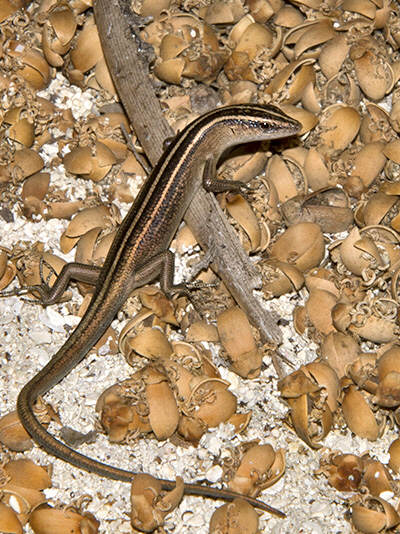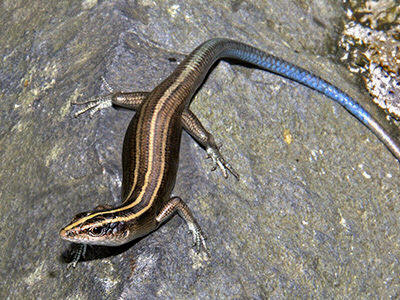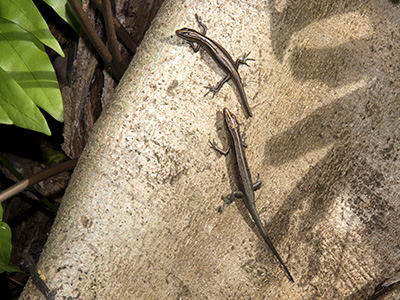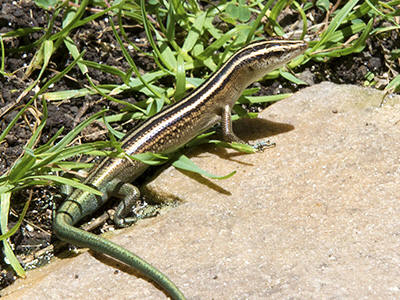
Fig 1

Fig 2

Fig 3

Fig 4
|
Family : SCINCIDAE
Species : Emoia cyanura
Size (snout to vent) : up to 5.6 cm
Size (total length) : up to 15 cm ?
The Copper-tailed Skink
(or 'White-bellied Copper Striped Skink') Emoia cyanura inhabits
sandy, back-beach habitats and open, secondary forest.
It is primarily a sun-loving terrestrial skink, but it may clamber onto low
vegetation or rocks to sun itself. This is in contrast to a similar, close
relative, Emoia impar (or Dark-bellied Copper Striped Skink') which
prefers more shady habitat in undisturbed forest.
It is a moderately slender skink with a long, slender tail. Its forelimbs
are relatively short, but its hindlimbs are much longer.
Its body is dark brown to blackish above, medium brown on the flanks,
and with three pale stripes extending from the snout to the upper part of
the tail. The colour of its tail may vary from copper to greenish to bluish
within populations, and it may appear to vary under strong sunlight.
Its underside is pale.
Its diet comprises a wide range of invertebrates including insects and small
spiders.
In Southeast Asia, this species reportedly occurs in parts of eastern
Indonesia including Borneo, Sulawesi and Halmahera. Its range extends to
many parts of the western Pacific Ocean including islands which comprise
part of Papua New Guinea (i.e. New Britain), Solomon Islands, Fiji,
Micronesia, French Polynesia and the Cook Islands (Zug, 2013).
Note : Given that the belly colour cannot be seen in these photographs,
these 5 skinks are identified as Emoia cyanura (and not Emoia
impar) largely on the basis of habitat preference.
Fig 1 : Example with copper-coloured tail from Bora Bora, French Polynesia.
It was feeding on small insects which were attracted to small husks which
had fallen from a tree in back-beach habitat.
Fig 2 : Specimen from Rarotonga, Cook Islands with a blue tail.
Fig 3 : A sparring pair from Rarotonga, Cook Islands, one of which has lost
part of its tail.
Fig 4 : Examples with a green tail from Bora Bora, French Polynesia.
References :
Zug, G. R. (2013). Reptiles and amphibians of the Pacific Islands: a
comprehensive guide. Univ of California Press.
|